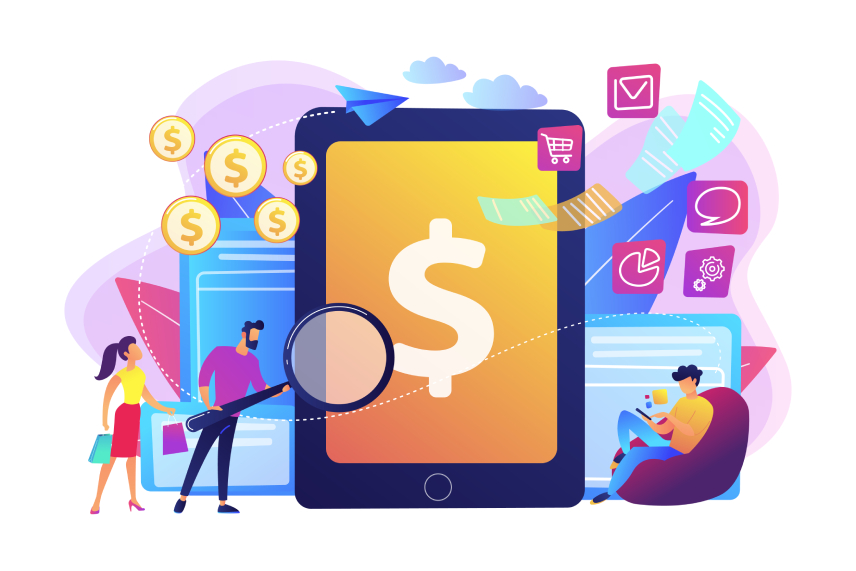Understanding the Cost of Mobile App Development
Understanding the Cost of Mobile App Development

Understanding the cost of mobile app development is crucial for businesses and developers aiming to create a successful app. The cost can vary significantly based on several factors, including app complexity, features, design, platform, and development team. This guide breaks down the key components that influence mobile app development costs and provides insights into budgeting effectively.
-
App Complexity: The complexity of the app is one of the primary cost drivers. Simple apps with basic features and straightforward functionality cost less to develop, whereas complex apps with advanced features, custom integrations, and intricate designs require more time and resources, leading to higher costs.
-
Features and Functionality: Each feature adds to the overall cost. Basic features like user login, social media integration, and basic analytics are less expensive. Advanced features such as real-time chat, GPS navigation, video streaming, and complex animations significantly increase development costs. Prioritize essential features and consider phasing additional functionalities in future updates.
-
Platform: The choice of platform impacts development costs. Developing a native app for iOS or Android involves creating separate codebases, which can be costly. Cross-platform development using frameworks like React Native or Flutter can reduce costs by allowing code reuse across platforms, but may come with performance trade-offs.
-
Design: High-quality UI/UX design is crucial for user engagement but can be costly. Custom designs, interactive elements, and animations require more design and development effort. Investing in professional design services ensures a polished, user-friendly app, but it’s important to balance design quality with budget constraints.
-
Development Team: The cost of hiring a development team varies based on their location, expertise, and experience. Developers in regions with higher living costs (e.g., North America, Western Europe) typically charge more than those in regions with lower living costs (e.g., Eastern Europe, Asia). Consider a mix of in-house and outsourced teams to manage costs effectively.
-
Backend Infrastructure: The complexity of backend infrastructure affects costs. A robust backend is essential for data storage, user authentication, and server-side logic. Using cloud services (e.g., AWS, Google Cloud) can offer scalable solutions, but it’s important to account for ongoing operational costs.
-
Integration with Third-Party Services: Integrating third-party services (e.g., payment gateways, social media APIs, analytics tools) can streamline development but adds to the overall cost. Evaluate the necessity and cost of each integration to optimize your budget.
-
Testing and Quality Assurance: Thorough testing is vital to ensure the app is bug-free and performs well across different devices and operating systems. The cost of QA can vary depending on the complexity of the app and the number of devices and platforms it supports. Automated testing tools can help reduce manual testing costs.
-
Maintenance and Updates: Post-launch maintenance and updates are ongoing costs that need to be factored in. Regular updates to fix bugs, improve performance, and add new features are essential for user retention and satisfaction. Plan for a maintenance budget to ensure your app remains competitive.
-
Marketing and Launch: Successful app launch requires a well-planned marketing strategy. Costs include app store optimization (ASO), social media campaigns, influencer partnerships, and possibly paid advertising. A strong marketing budget can help your app gain visibility and attract users.
-
Hidden Costs: Be aware of potential hidden costs such as licensing fees for development tools, unexpected technical challenges, and scope changes during development. Allocating a contingency budget helps manage unforeseen expenses.
-
Project Management: Effective project management ensures the project stays on track and within budget. The cost of project management depends on the project's complexity and duration. Experienced project managers can help optimize resources and prevent costly delays.
-
Legal and Compliance: Depending on your app’s functionality and target market, there may be legal and compliance costs. These include data protection regulations (e.g., GDPR), intellectual property rights, and user agreements. Consulting with legal experts ensures your app complies with relevant laws and avoids potential fines.
-
User Support: Providing user support post-launch is crucial for maintaining a positive user experience. Costs include setting up support channels, hiring support staff, and maintaining a knowledge base or FAQ section.
-
Scalability: Designing your app for scalability ensures it can handle growing user numbers without performance degradation. This involves additional upfront costs but saves money in the long run by avoiding major overhauls as your user base expands.
In summary, understanding the cost of mobile app development involves considering various factors from app complexity and features to design, platform, and ongoing maintenance. By carefully planning and budgeting for each component, you can ensure a smooth development process and create a high-quality app that meets your business objectives and user needs. This guide provides a comprehensive overview to help you navigate the financial aspects of mobile app development effectively.